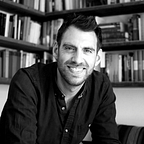Understanding the Drama Triangle: Breaking Free from Destructive Relationship Patterns
As a psychotherapist, I often encounter clients who find themselves trapped in destructive patterns of relating. These patterns of conflict and drama can hinder personal growth and strain intimate relationships. One psychological model that sheds light on these dynamics is the Drama Triangle, first described by Dr. Stephen Karpman in the 1960s.
The Drama Triangle explains the different roles people assume in interpersonal conflicts and offers insights into the ineffective responses that perpetuate these destructive patterns. Karpman developed his model after studying the roles typically assigned to characters in folk and fairy tales. He was intrigued by the ‘archetypal’ nature of these roles — how they show up time and time again.
Within the Drama Triangle, there are three primary roles: the Victim, the Rescuer, and the Persecutor. Each role represents a common and unproductive reaction to conflict. Let’s take a close look at the characteristics of each role and how they contribute to the drama:
- Victim: Individuals in the Victim role often feel victimized, trapped, helpless, and hopeless. They perceive themselves as being at the mercy of life’s circumstances and are reluctant to take responsibility for their own situations. Victims tend to blame others for their problems, fostering a sense of powerlessness and resignation.
- Rescuer: Rescuers are driven to solve the problems of others, but their actions often perpetuate the power imbalance. They derive a sense of self-worth from helping others, but their assistance often disempowers the supposed recipients. Rescuers fail to recognize that genuine empowerment involves fostering autonomy rather than dependency.
- Persecutor: Persecutors blame and criticize others for their problems, resorting to threats, intimidation, and aggression to assert control. They may feel powerful in the moment, but their behavior damages relationships and fosters an environment of fear and resentment.
It is essential to understand that individuals move between these roles, and all three have detrimental effects on relationships. Indeed, Karpman’s model is also sometimes called the Victim triangle, as all three roles are, in a sense, driven by victimhood. (Consider all the different ways Victims persecute, for example.) Recognizing one’s own role within the Drama Triangle is a crucial step toward breaking free from these destructive patterns. By gaining awareness and understanding, individuals can begin to take responsibility for their feelings and actions, fostering healthier and more fulfilling relationships.
The Drama Triangle can provide a framework for self-reflection and growth. By acknowledging the roles we fall into, and their impact on conflicts, we can develop strategies to transform our interactions. Here are a few key steps to escape the Drama Triangle:
- Self-reflection: Take time to reflect on your own patterns of behavior and the role you tend to assume during conflicts. Be honest with yourself and explore the underlying emotions and motivations that drive your actions.
- Personal responsibility: Recognize that you have agency in your own life. Take responsibility for your feelings, choices, and actions. Understand that blaming others or rescuing them will not lead to long-term resolution or personal growth.
- Effective communication: Learn and practice healthy communication skills, such as active listening, assertiveness, and empathy. Express your needs and boundaries while respecting those of others.
- Boundaries and self-care: Establish clear boundaries to protect your well-being and prevent enabling or codependent behaviors. Prioritize self-care and nurture your own emotional and physical health.
- Seek professional support: If you find it challenging to break free from the Drama Triangle or to navigate conflicts, consider seeking guidance from a qualified therapist or counselor. They can provide invaluable insights and tools to support your journey toward healthier relationships.
Karpman himself developed his own model in lots of interesting directions to account for the complexity of relationship dynamics. In 1990, Acey Choy developed ‘The Winners Triangle’, which attempted to show how each drama position could be transformed into its healthy ‘shadow’. So the Victim becomes the Creator, the Persecutor becomes the Challenger, and the Rescuer becomes the Coach. Assuming these roles disrupts the toxic flow of blame, shame, and powerlessness.
Breaking free from the Drama Triangle takes time, self-reflection, and effort. But by embracing personal growth, taking responsibility for your own actions, and fostering effective communication, you can transform your relationships and cultivate a healthier and more fulfilling life.
